四氢茚, 99.9%,3A,4,7,7A-TETRAHYDROINDENE
产品编号:西域试剂-WR124654| CAS NO:3048-65-5| MDL NO:MFCD00021227| 分子式:C9H12| 分子量:120.2
本网站销售的所有产品仅用于工业应用或者科学研究等非医疗目的,不可用于人类或动物的临床诊断或者治疗,非药用,非食用,
| 英文名称 | 3A,4,7,7A-TETRAHYDROINDENE |
|---|---|
| CAS编号 | 3048-65-5 |
| 产品沸点 | 169.1ºC at 760mmHg |
| 产品密度 | 0.93 |
| 产品闪点 | 33.8ºC |
| 精确质量 | 120.09400 |
| LogP | 2.52870 |
| 外观性状 | 液体;Colorless to Light yellow to Light orange clear liquid |
| 折射率 | 1.497 |
| 稳定性 | 遵照规定使用和储存则不会分解。 |
| 储存条件 | 密闭于阴凉干燥环境中 |
相关文档
化学品安全说明书(MSDS)
下载MSDS质检证书(COA)
相关产品
| 风险声明 (欧洲) | R10;R65 |
|---|---|
| 安全声明 (欧洲) | S16-S23-S36/37-S62 |
| 危险品运输编码 | UN 3295 |
| RTECS号 | NK8750000 |
| 包装等级 | III |
| 危险类别 | 3 |
|
Section I.Chemical Product and Company Identification Chemical Name 3a,4,7,7a-Tetrahydroindene Portland OR SynonymBicyclo (4,3,0)nona-3,7-diene Chemical FormulaC9H12 CAS Number3048-65-5 Section II.Composition and Information on Ingredients Chemical NameCAS Number Percent (%)TLV/PELToxicology Data 3a,4,7,7a-Tetrahydroindene3048-65-5Min. 98.0 Not available.Rat LD50 (oral) 3730 mg/kg Rabbit LD50 (dermal) 14,100 mg/kg (GC) Mouse LD50 (oral) 3500 mg/kg Section III. Hazards Identification Acute Health EffectsNo specific information is available in our data base regarding the toxic effects of this material for humans. However, exposure to any chemical should be kept to a minimum. Skin and eye contact may result in irritation. May be harmful if inhaled or ingested. Always follow safe industrial hygiene practices and wear proper protective equipment when handling this compound. CARCINOGENIC EFFECTS : Not available. Chronic Health Effects MUTAGENIC EFFECTS : Not available. TERATOGENIC EFFECTS : Not available. DEVELOPMENTAL TOXICITY: Not available. There is no known effect from chronic exposure to this product. Repeated or prolonged exposure to this compound is not known to aggravate existing medical conditions. Section IV.First Aid Measures Eye ContactCheck for and remove any contact lenses. DO NOT use an eye ointment. Flush eyes with running water for a minimum of 15 minutes, occasionally lifting the upper and lower eyelids. Seek medical attention. Treat symptomatically and supportively. Skin ContactIf the chemical gets spilled on a clothed portion of the body, remove the contaminated clothes as quickly as possible, protecting your own hands and body. Place the victim under a deluge shower. If the chemical touches the victim's exposed skin, such as the hands: Gently and thoroughly wash the contaminated skin with running water and non-abrasive soap. Be particularly careful to clean folds, crevices, creases and groin. Cover the irritated skin with an emollient. Seek medical attention. Treat symptomatically and supportively. Wash any contaminated clothing before reusing. InhalationIf the victim is not breathing, perform artificial respiration. Loosen tight clothing such as a collar, tie, belt or waistband. If breathing is difficult, oxygen can be administered. Seek medical attention. Treat symptomatically and supportively. IngestionINDUCE VOMITING by sticking finger in throat. Lower the head so that the vomit will not reenter the mouth and throat. Loosen tight clothing such as a collar, tie, belt, or waistband. If the victim is not breathing, administer artificial respiration. Examine the lips and mouth to ascertain whether the tissues are damaged, a possible indication that the toxic material was ingested; the absence of such signs, however, is not conclusive. Seek immediate medical attention and, if possible, show the chemical label. Treat symptomatically and supportively. Section V. Fire and Explosion Data Not available. Auto-Ignition FlammabilityCombustible. Flammable Limits Flash PointsNot available. Not available. Combustion ProductsThese products are toxic carbon oxides (CO, CO 2). Fire Hazards No specific information is available regarding the flammability of this compound in the presence of various materials. Explosion HazardsRisks of explosion of the product in presence of mechanical impact: Not available. Risks of explosion of the product in presence of static discharge: Not available. No additional information is available regarding the risks of explosion. Continued on Next Page 3048-3a,4,7,7a-Tetrahydroindene Fire Fighting Media SMALL FIRE: Use DRY chemicals, CO 2, water spray or foam. and InstructionsLARGE FIRE: Use water spray, fog or foam. DO NOT use water jet. Section VI.Accidental Release Measures Spill CleanupFlammable liquid. Keep away from heat and sources of ignition. Mechanical exhaust required. Stop leak if without risk. Absorb with DRY Instructions earth, sand or other non-combustible material. DO NOT touch spilled material. Prevent entry into sewers, basements or confined areas; dike if needed. Eliminate all sources of ignition. Consult federal, state, and/or local authorities for assistance on disposal. Section VII. Handling and Storage FLAMMABLE. Reactive with strong oxidizers; may be ignited by heat, sparks, or flames. Vapors may travel to source of Handling and Storage ignition and flash back. Tightly seal container and store in a cool place. Closed containers may explode from heat of a Information fire. Empty containers may pose a fire risk. Evaporate residue under a fume hood if possible. Ground all equipment containing material. Keep away from heat and sources of ignition. Mechanical exhaust required. Avoid excessive heat and light. Do not breathe gas, fumes, vapor or spray. In case of insufficient ventilation, wear suitable respiratory equipment. If you feel unwell, seek medical attention and show the label when possible. Treat symptomatically and supportively. Avoid contact with skin and eyes. Always store away from incompatible compounds such as oxidizing agents. Section VIII. Exposure Controls/Personal Protection Provide exhaust ventilation or other engineering controls to keep the airborne concentrations of vapors below their Engineering Controls respective threshold limit value. Ensure that eyewash station and safety shower is proximal to the work-station location. Personal ProtectionSplash goggles. Lab coat. Vapor respirator. Boots. Gloves. A MSHA/NIOSH approved respirator must be used to avoid inhalation of the product. Suggested protective clothing might not be sufficient; consult a specialist BEFORE handling this product. Exposure Limits Not available. Section IX. Physical and Chemical Properties Physical state @ 20°CLiquid.Solubility Not available. 0.93 Specific Gravity Molecular Weight120.19Partition Coefficient Not available. Boiling PointVapor Pressure 160°C (320°F)Not available. Not available.Not available. Melting PointVapor Density Refractive IndexNot available.VolatilityNot available. Critical TemperatureNot available.OdorNot available. ViscosityNot available.TasteNot available. Section X.Stability and Reactivity Data Stability This material is stable if stored under proper conditions. (See Section VII for instructions) Conditions of Instability Avoid excessive heat and light. Incompatibilities Reactive with oxidizing agents. Section XI. Toxicological Information RTECS NumberNK8750000 Routes of ExposureEye contact. Inhalation. Ingestion. Toxicity DataRat LD50 (oral) 3730 mg/kg Rabbit LD50 (dermal) 14,100 mg/kg Mouse LD50 (oral) 3500 mg/kg CARCINOGENIC EFFECTS : Not available. Chronic Toxic Effects MUTAGENIC EFFECTS : Not available. TERATOGENIC EFFECTS : Not available. DEVELOPMENTAL TOXICITY: Not available. There is no known effect from chronic exposure to this product. Repeated or prolonged exposure to this compound is not known to aggravate existing medical conditions. Acute Toxic EffectsNo specific information is available in our data base regarding the toxic effects of this material for humans. However, exposure to any chemical should be kept to a minimum. Skin and eye contact may result in irritation. May be harmful if inhaled or ingested. Always follow safe industrial hygiene practices and wear proper protective equipment when handling this compound. Continued on Next Page 3a,4,7,7a-Tetrahydroindene Section XII.Ecological Information EcotoxicityNot available. Environmental FateNot available. Section XIII. Disposal Considerations Recycle to process, if possible. Consult your local or regional authorities. You may be able to dissolve or mix material with Waste Disposal a combustible solvent and burn in a chemical incinerator equipped with an afterburner and scrubber system. Observe all federal, state, and local regulations when disposing of this substance. Section XIV. Transport Information DOT ClassificationCLASS 3: Flammable liquid. PIN Number Proper Shipping Name Hydrocarbons, liquid, n.o.s. Packing Group (PG)II DOT Pictograms Section XV. Other Regulatory Information and Pictograms TSCA Chemical InventoryThis product is ON the EPA Toxic Substance Control Act (TSCA) inventory. (EPA) WHMIS Classification Not controlled under WHMIS (Canada). (Canada) EINECS Number (EEC) Not available. EEC Risk StatementsNot available. SECTION 16 - ADDITIONAL INFORMATION N/A |
|
~% 
3048-65-5 |
| 文献:US2009/54714 A1, ; Page/Page column 13 ; |
|
~% 
3048-65-5
详细
|
| 文献:US2009/54714 A1, ; Page/Page column 7 ; |
|
~% 
3048-65-5 |
| 文献:US2009/54714 A1, ; Page/Page column 13 ; |
|
~52% 
3048-65-5
详细
|
| 文献:US2009/54714 A1, ; Page/Page column 13-14 ; |
| 上游产品 1 | |
|---|---|
| 下游产品 6 | |


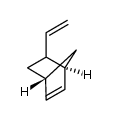
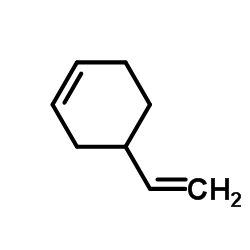
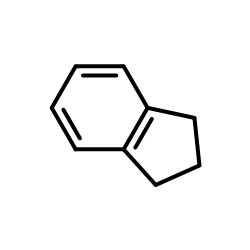

![cis-bicyclo[4.3.0]nona-2,8-diene结构式](/20230522/7603-35-2.png)
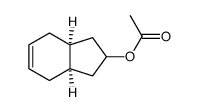
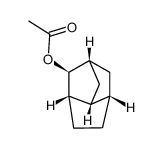






 浙公网安备 33010802013016号
浙公网安备 33010802013016号